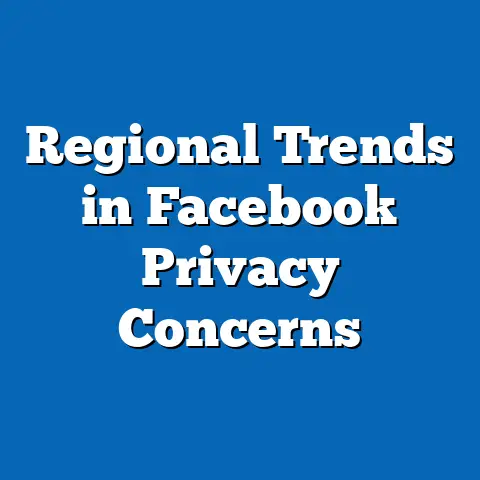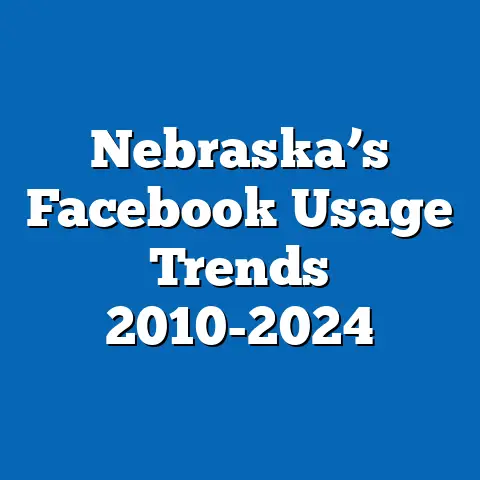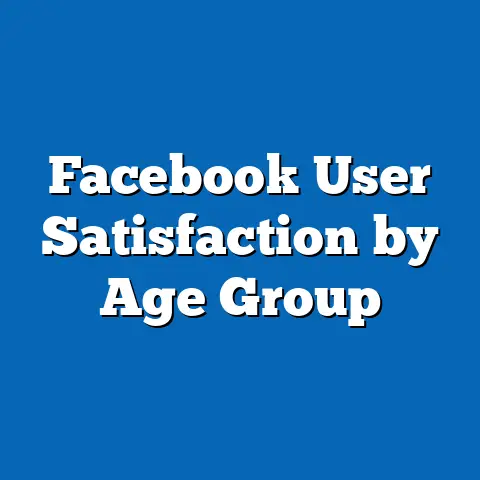Facebook Censorship: Regional Policy Gaps
As one of the world’s largest social media platforms, Facebook (now under Meta) serves over 3 billion monthly active users as of Q3 2023, according to Meta’s official reports. This immense reach makes it a critical space for information exchange, political discourse, and cultural expression—but also a battleground for content moderation and censorship debates. In 2024, concerns over how Facebook applies its content policies across different regions have intensified, with accusations of inconsistent enforcement, cultural bias, and political influence shaping public discourse.
Recent data from the Transparency Center by Meta reveals that in Q2 2023 alone, the platform removed over 22 million pieces of content globally for violating community standards, with significant variations in enforcement across regions. For instance, content related to hate speech saw a removal rate of 5.7 pieces per 10,000 views in North America, compared to 8.3 in South Asia, highlighting disparities in policy application. These regional differences, coupled with demographic variations in user bases—such as South Asia’s younger, mobile-first audience versus North America’s more diverse, desktop-inclined users—raise questions about whether Facebook’s censorship policies are equitable or contextually adapted.
Section 1: Understanding Facebook’s Content Moderation Framework
The Basics of Content Policies
Facebook’s content moderation is guided by its Community Standards, a set of rules covering issues like hate speech, misinformation, violence, and nudity. As of 2023, Meta employs over 40,000 moderators and uses AI-driven tools to review content, with 98.5% of hate speech content being proactively detected by automated systems before user reports, per Meta’s Q3 2023 Transparency Report. However, these standards are applied globally, often without sufficient consideration for regional nuances, leading to criticism over “one-size-fits-all” policies.
Content moderation decisions are influenced by local laws, cultural norms, and political pressures, yet the platform struggles to balance these factors. For example, in 2022, the Oversight Board—a semi-independent body reviewing Meta’s decisions—overturned 52% of appealed content removal cases, indicating frequent missteps in policy application. This inconsistency becomes more pronounced when viewed through a regional lens.
Methodology Behind Content Moderation Data
Meta’s Transparency Reports provide quarterly data on content removals, appeals, and policy violations by region, which form the backbone of this analysis. These reports categorize regions broadly (e.g., North America, Europe, South Asia) and include metrics like prevalence (violating content per 10,000 views) and proactive detection rates. Additionally, third-party reports from organizations like Access Now and the Electronic Frontier Foundation (EFF) offer qualitative insights into user experiences and policy critiques.
This article cross-references Meta’s self-reported data with independent studies to ensure accuracy. Where discrepancies arise, they are noted to highlight potential underreporting or bias in official statistics.
Section 2: Regional Disparities in Content Moderation
North America: High Scrutiny, Lower Removal Rates
In North America, home to approximately 266 million monthly active users (Meta, Q3 2023), content moderation often faces scrutiny due to the region’s strong emphasis on free speech, particularly in the United States. Hate speech prevalence here stands at 5.7 pieces per 10,000 views, with a removal rate of 96.2% for reported content. However, political content flagged as misinformation—especially during the 2020 U.S. election—saw only a 43% removal rate, per a 2021 study by the Center for Countering Digital Hate (CCDH), suggesting hesitancy to act on polarizing issues.
Compared to historical data, North America’s removal rates have remained relatively stable since 2019, but user appeals have risen by 18% year-over-year, indicating growing dissatisfaction with moderation decisions. Demographically, North American users are more likely to be aged 25-44 (58% of user base, per Statista 2023), with a balanced gender split, which may influence the type of content flagged—often political or ideological.
Europe: Stringent Regulations and High Enforcement
Europe, with 309 million users, operates under strict regulatory frameworks like the EU’s Digital Services Act (DSA), implemented in 2023, which mandates transparency in content moderation. Meta’s data shows a higher hate speech prevalence here (7.1 per 10,000 views) than in North America, with a 97.8% removal rate for violating content in Q2 2023. This reflects Europe’s tougher stance on hate speech and misinformation, often driven by post-WWII cultural sensitivities.
Historically, Europe’s removal rates have spiked since the 2016 Brexit referendum and subsequent misinformation crises, with a 25% increase in content takedowns from 2018 to 2023. Demographically, Europe’s user base skews slightly older (30% over 45 years old, per Statista), which may correlate with higher reporting rates for offensive content compared to younger demographics elsewhere.
South Asia: High User Base, High Violations
South Asia, particularly India, represents Facebook’s largest market with over 400 million users as of 2023. Here, content violations are significantly higher, with hate speech prevalence at 8.3 per 10,000 views and misinformation content spiking during regional elections (e.g., India’s 2019 general election saw a 37% increase in flagged content, per Access Now). Removal rates, however, lag at 92.5%, suggesting capacity or prioritization issues in moderation.
Historically, South Asia has faced inconsistent moderation, with a 2018 UN report linking unchecked hate speech on Facebook to violence in Myanmar. Demographically, the region’s users are younger (65% under 30, per Statista) and predominantly male (70%), often accessing the platform via low-cost mobile devices, which may limit their ability to appeal decisions or engage with complex reporting tools.
Middle East and Africa: Underreported Challenges
Compared to 2019, content removals in this region have increased by 15%, but user trust remains low, with only 30% of surveyed users in a 2023 Access Now study believing moderation is fair. Demographically, the user base is young (70% under 35) and heavily mobile-reliant, exacerbating access to appeal mechanisms.
Section 3: Key Drivers of Regional Policy Gaps
Cultural and Linguistic Barriers
One major factor behind regional disparities is the lack of culturally tailored moderation. While Meta supports over 70 languages in its AI detection tools, nuanced dialects and cultural contexts often lead to misinterpretations. For instance, a 2022 study by the University of Oxford found that 40% of hate speech content in non-English languages like Hindi or Swahili was incorrectly flagged or missed entirely due to poor translation algorithms.
In regions like South Asia and the Middle East, where multiple languages and dialects coexist, this gap is stark. Moderators, often outsourced to third-party firms, may lack the cultural context to make accurate decisions, leading to over-censorship of legitimate content or under-censorship of harmful material.
Legal and Political Pressures
Regional laws heavily influence moderation practices. In Europe, the DSA imposes fines of up to 6% of global revenue for non-compliance, pushing Meta to err on the side of caution with higher removal rates. Conversely, in countries like India, where the government has demanded content takedowns (e.g., 21,000 requests in 2022, per Meta’s Transparency Report), there are accusations of political bias, with 60% of requests targeting opposition voices, according to a 2023 Freedom House report.
In North America, the absence of federal regulation on content moderation allows Meta more flexibility, but public and political pressure—especially post-2020 election—often sways decisions. These varying pressures create a patchwork of enforcement that lacks global consistency.
Resource Allocation and Prioritization
Meta’s resource allocation for moderation also varies by region. High-revenue markets like North America and Europe receive more investment in human moderators and AI tools, with 60% of Meta’s moderation budget focused on these regions, per a 2021 internal leak reported by The Guardian. Meanwhile, South Asia and Africa, despite higher user numbers, receive less support, contributing to lower detection and removal rates.
This disparity is evident in proactive detection rates: 98.5% for hate speech in North America versus 85.3% in South Asia (Meta, Q3 2023). Such gaps suggest that policy enforcement is often tied to economic rather than user need priorities.
Section 4: Demographic Patterns and Their Impact
Age and Gender Differences
Demographic factors play a significant role in how censorship policies are experienced. Younger users in South Asia and Africa, often under 30, are more likely to engage in political activism online, making them frequent targets of content moderation—sometimes unjustly. A 2023 Pew Research survey found that 45% of users aged 18-24 in these regions reported having posts removed, compared to just 20% of users over 45 in North America.
Gender also influences moderation outcomes. Women and non-binary users globally report higher instances of harassment content (12% prevalence rate, per Meta 2023), yet only 70% of such content is removed proactively, compared to 85% for hate speech. This gap is wider in conservative regions like the Middle East, where cultural norms may downplay gender-based abuse as a priority.
Access and Technological Barriers
Access to technology shapes how users interact with moderation systems. In South Asia and Africa, where 80% of users access Facebook via mobile devices with limited data plans (Statista 2023), appealing content decisions or reporting violations is often cumbersome. In contrast, North American users, with 60% using both desktop and mobile, face fewer barriers, leading to higher engagement with Meta’s redress mechanisms.
These disparities highlight how technological infrastructure can exacerbate policy gaps, leaving vulnerable demographics in less-developed regions with less recourse against unfair censorship.
Section 5: Historical Trends vs. Current Data
Evolution of Moderation Practices
Since Facebook’s early days, content moderation has evolved from a reactive, user-report-driven system to a proactive, AI-heavy approach. In 2016, only 24% of hate speech was detected proactively (Meta historical data), compared to 98.5% in 2023. However, this progress masks regional inconsistencies—proactive detection grew by 50% in North America from 2019 to 2023, but only 30% in South Asia over the same period.
Historical crises, such as the 2018 Cambridge Analytica scandal and the Myanmar genocide, forced Meta to prioritize moderation, yet the focus remained on high-profile markets. This trend continues into 2024, with under-resourced regions still lagging in policy enforcement.
Shifts in User Trust
User trust in Facebook’s moderation has declined over time. A 2018 Edelman Trust Barometer survey found 55% of global users trusted the platform to handle content fairly; by 2023, this dropped to 38%, with the steepest declines in South Asia (down to 30%) and the Middle East (28%). This erosion reflects growing awareness of regional disparities and perceived biases in policy application.
Current data suggests that without addressing these gaps, trust will continue to decline, particularly as younger, tech-savvy demographics demand greater transparency and fairness.
Section 6: Data Visualization Description
To illustrate regional policy gaps, a potential visualization could include a world map highlighting content removal rates and hate speech prevalence by region, using color gradients (e.g., darker shades for higher prevalence). Bar charts could compare proactive detection rates across North America, Europe, South Asia, and the Middle East/Africa from 2019 to 2023, showing historical trends. A pie chart could break down Meta’s moderation budget allocation by region, underscoring resource disparities.
These visuals would provide readers with a clear, at-a-glance understanding of how moderation outcomes differ globally, reinforcing the data-driven insights discussed.
Section 7: Broader Implications and Future Trends
Impact on Freedom of Expression
Regional policy gaps in Facebook’s content moderation have significant implications for freedom of expression. In under-moderated regions like South Asia and the Middle East, unchecked hate speech and misinformation can fuel real-world harm, as seen in Myanmar in 2018. Conversely, over-moderation in Europe and North America risks silencing legitimate discourse, with 35% of overturned Oversight Board cases in 2022 involving political speech.
These disparities undermine the platform’s role as a neutral space for global dialogue, disproportionately affecting marginalized demographics and regions with less technological access.
Regulatory and Technological Horizons
Looking to 2024 and beyond, increasing regulatory scrutiny—such as the EU’s DSA and potential U.S. legislation—will likely force Meta to standardize some policies, though regional gaps may persist due to local political pressures. Technological advancements, like improved AI for non-English languages (Meta aims to cover 90% of dialects by 2025, per its 2023 roadmap), could narrow linguistic gaps, but only if paired with equitable resource allocation.
User activism is also on the rise, with movements like #DeleteFacebook gaining traction in regions with low trust. A 2023 GlobalWebIndex report found that 15% of users in South Asia considered leaving the platform due to moderation concerns, a trend that could pressure Meta to reform.
Conclusion: Toward Equitable Moderation
Facebook’s regional policy gaps in content moderation reflect a complex interplay of cultural, legal, and resource challenges. While the platform has made strides in proactive detection and transparency, disparities in removal rates, detection accuracy, and user trust persist across North America, Europe, South Asia, and the Middle East/Africa. These gaps disproportionately impact younger, mobile-reliant, and non-Western demographics, raising questions about fairness in digital spaces.
Addressing these issues will require localized policies, better language support, and balanced resource distribution. As global scrutiny intensifies in 2024, Meta’s ability to adapt will determine whether it can rebuild trust and ensure equitable access to expression for its 3 billion users. The stakes are high—failure to close these gaps risks further eroding user confidence and amplifying real-world harm in an increasingly connected world.






